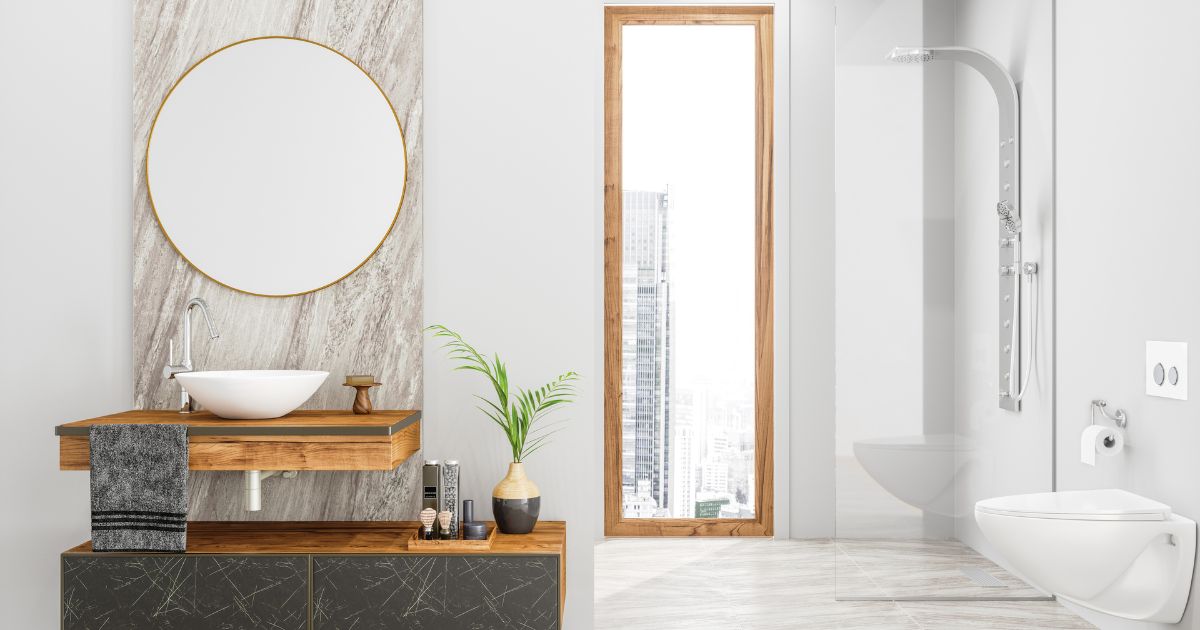Let’s face it: The dizzying array of bathroom vanity options can put even the most experienced remodeler to the test. There are a huge vanity shapes, sizes and designs from which to choose. If you enter your supplier’s warehouse to choose a vanity centerpiece without being prepared, the sheer volume of options will bring you to your knees.
This buyer’s guide to bathroom vanities will help you evaluate the style and design options. Let’s get started.
Know thy space
Before you look at designs and styles, you first need to know how much space the bathroom will allow for the vanity. Measure the room before hitting the store so you know how much storage and counter space you’ll be allowed. Specifically, you’ll need to know the maximum and minimum width, height and depth for the vanity.
Sink in
If yours is a busy bathroom, consider choosing a vanity with a double sink. It’s ideal for a family or Jack and Jill bathroom. To accommodate this type of vanity, your bathroom will need to allow for a width of 48 inches, possibly more. Go with a single vanity if the bathroom’s space is limited or you’d like to maximize counter space.
Mount it up
There are three general types of vanity mountings from which to choose:
- Corner mounted. If you need a space-saving option, go with the corner-mounted vanity. The name implies where the vanity goes: in a corner. The back of the vanity has a 90-degree angle to fit snugly into the corner.
- Free standing. This type of vanity is similar to a clothing dresser. It has four legs and offers the most space for storage. As such, it can be installed nearly anywhere, since it’s not dependent on a corner for installation or wall studs.
- Wall mounted. This bathroom vanity doesn’t have legs, so it must be secured to the wall. Many homeowners turn to this vanity when they want an open, modern style.
Sink options
Now that you know the amount of space the bathroom has, how many sinks you need and the type of vanity mounting, it’s time to choose the type of sink to use. An undermount sink is installed underneath the counter, offering a smooth, clean look. It’s also easy to clean this kind of vanity, because it lacks edges. A self-rimming vanity is also called a drop-in or top-mount design. The sink is mounted right into the countertop’s opening, and it sits on the edges. A vessel sink sits directly on top of the counter, kind of like a bowl on a table. This type of sink is fast becoming the go-to option for a modern bathroom.
Style and design
The last factor to consider when choosing a bathroom vanity involves your style, as the design of your home should mesh with the bathroom. In addition, if you’re only swapping out the vanity and leaving the flooring, wall color and tub, the new vanity should be streamlined with the existing design. Here are a few tips to keep in mind when considering style:
- A contemporary bathroom will have clean lines and a non-fussy look.
- Modern designs will feature bold shapes, sharp angles and clean lines.
- Traditional bathrooms have lots of detail, such as ornate wood carvings, rich wood elements and paneled doors.
- A rustic bathroom is casual. The relaxed space should feature lots of raw, natural materials, like a granite or wood countertop.
Armed with this bathroom vanity guide, your next stop at the vanity supplier’s warehouse will be a breeze. Just remember that you need to know the square footage for the vanity, the type of sink and mount, as well as your design aesthetic.



